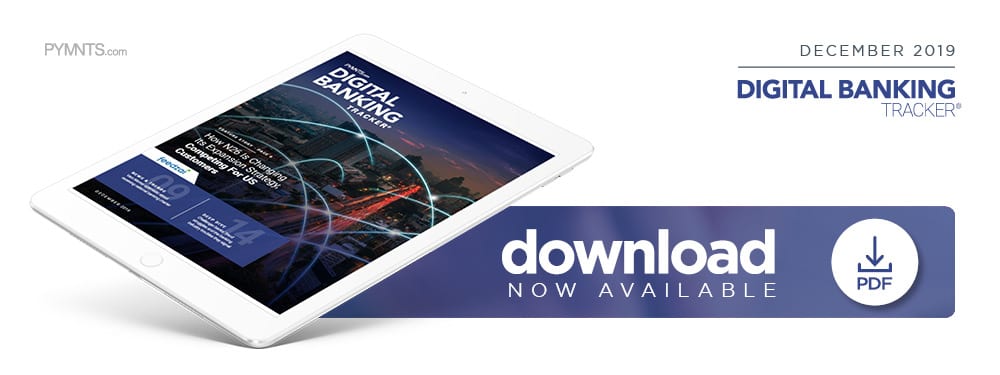How N26 Is Changing Its Expansion Strategy, Competing For US Customers

Move fast and break the conventional mold is a strategy practically synonymous with challenger banks. But to gain traction in markets where established banks keep a tight hold on consumers, challengers will need to do better. In the latest Digital Banking Tracker™, Nicolas Kopp, N26’s U.S. CEO, explains how its Perks rewards system and micro-accounts geared toward savings goals are helping win and retain customers six months into its U.S. launch.
Challenger banks fit uniquely into the global banking ecosystem. They have outgrown their statuses as alternatives to more established financial players in Europe, where digital FIs like Monzo, N26 and Starling Bank are operating full-scale platforms, but they have experienced less development in the U.S., making the country an attractive prospect for international expansion efforts.
Germany-based N26 launched in 2013 and began operating in the U.S. earlier this year. Its U.S. CEO, Nicolas Kopp, recently told PYMNTS that the move came after N26 considered the digital banking perceptions and preferences of local consumers.
“You have a market that has high-level phone penetration, [and] people are really tech-savvy and are used to trying out new products,” Kopp explained. “At the same time, I think some of the payment and banking infrastructure is fairly outdated. I think that combination … made [it] a really attractive option for us to expand into the U.S.”
Competing in a crowded field
Financial service providers must take certain steps to enter any new market, such as tailoring products to customers’ needs and ensuring offerings adhere to regulations. N26 partnered with San Diego-based Axos Bank to bring its services to U.S. users and comply with regulatory standards.
Kopp said managing the customer side before the launch was trickier, however. Both European and U.S. consumers primarily bank online but differ in how they do so. Americans are used to receiving points and cashback on purchases, for example, a phenomenon that is not as common in Europe.
“Another key consumption difference for our users is [that] people have lower savings rates here in the U.S., so their affinity [for] credit products, credit cards, loans, overdrafts — whatever it may be — is higher versus, for example, comparing it to continental Europe,” Kopp said. “It is hard to generalize, because Europe is such a different market in many aspects, too, but … savings rates in the U.S. are [about] five times lower than what they are in Germany, so [we opened] a few specific products … to help address that difference here in the U.S.”
One such product is N26’s Perks program, which offers discounts on subscriptions to entertainment, fitness and health apps. The company also rolled out a feature called Spaces that creates micro-accounts geared toward specific savings goals. N26 is far from the only institution offering such products to U.S. consumers, though, and it must contend with large-scale technology players like Apple, Google and Facebook that are making their own financial services moves.
“I get asked [this] question a lot: ‘Are you worried about that [competition]?’” Kopp said. “I think that, at this stage — around the evolution and the awareness of these products — it’s actually helpful to have more mass in the industry. I do think some of the movement that has been going on … is actually potentially net positive [and creating] awareness around the space.”
That awareness can be a double-edged sword for FIs looking to capture the trust and loyalty of new customers, however. Consumers view their banks as both the keepers of their financial details and the guilty parties when such information is compromised — even if uninvolved in fraud headlines.
“What really hurts our industry is any scandal that you have around data breaches — and not necessarily just financial services,” Kopp said. “You also have technology companies [being attacked, and] that really hurts the trust in the tech ecosystem in general. I think it’s a detractor from some of the shifts [in the industry] where people [are] getting fundamentally comfortable with banking on their phones.”
Tackling expanding fraud problems
Managing fraud is a top concern for all FIs, but challengers face their own hurdles. These digital FIs do not have physical branches, meaning they must find ways to reassure consumers outside of face-to-face interactions.
“One key difference [between challenger and legacy banks] is the fact that you can go to a physical branch,” Kopp said. “I feel that psychological safety net does play a role when you speak to customers across the country. At N26, we do not have branches and we will not have branches, so … approaching customer trust from that perspective is definitely something that [we] need to think through.”
Certain fraud concerns like identity theft plague FIs of all types. Customers are being verified in person less often as banking becomes more digital, and identity verification tools must keep fraudsters locked out of online banking platforms.
“What I am actually baffled with these days is how good synthetic ID fraud … has become,” Kopp explained. “It is really impressive what certain fraudsters have come up with in terms of actually building digital profiles for people who don’t exist. But the profiles look very legit. They have been crafting these profiles not just over the span of a few days, but months and potentially years … which is something banks, in general, really need to watch.”
Keeping abreast of fraud concerns will remain essential to digital banking in any market, but it is important for FIs to not let security features override the seamlessness users expect. Challenger banks will thus need to keep customers happy if they wish to maintain their global financial ecosystem growth.

